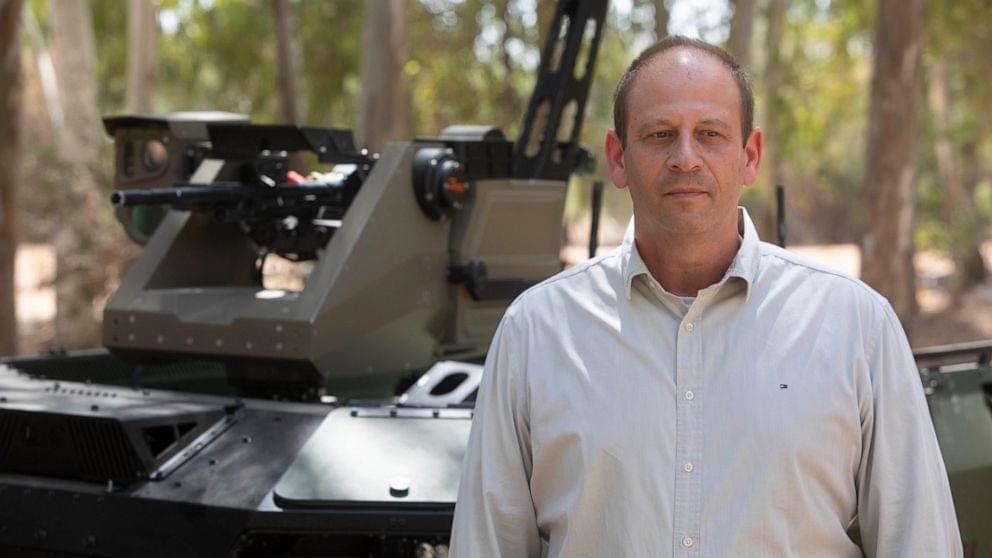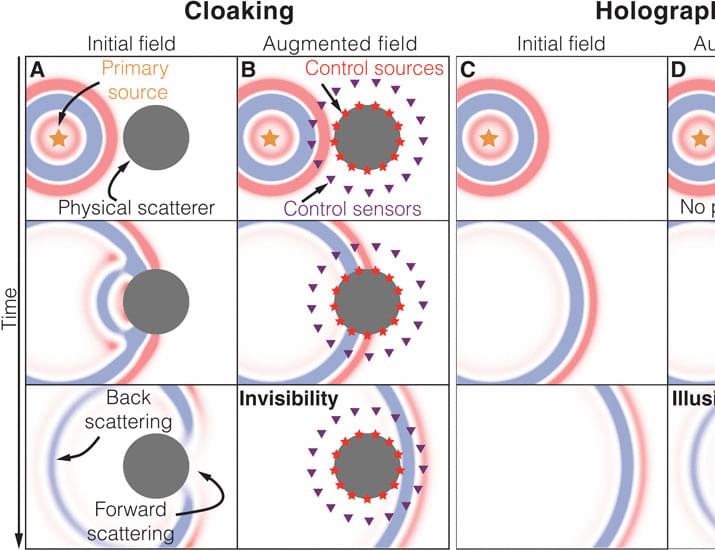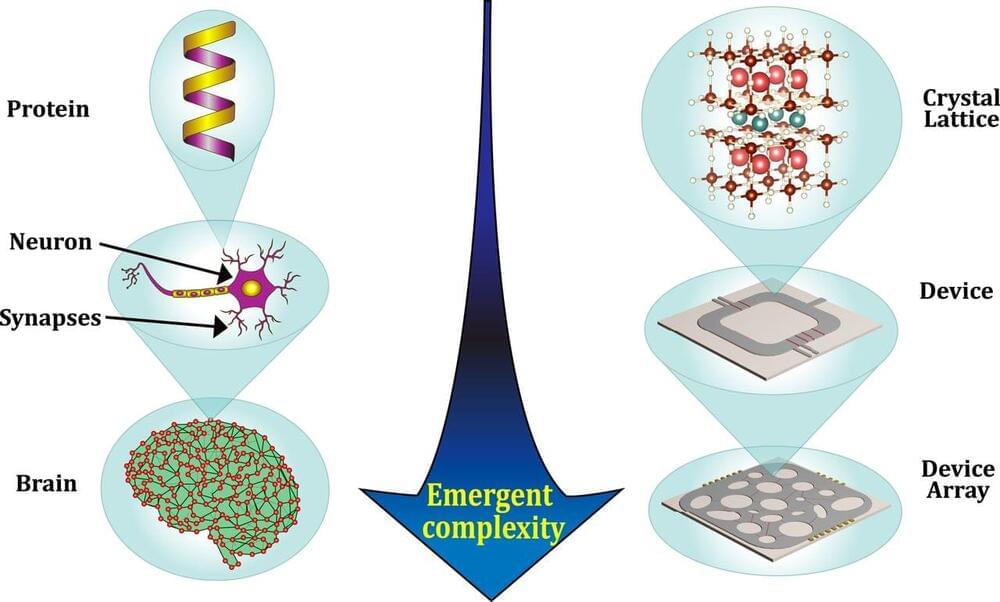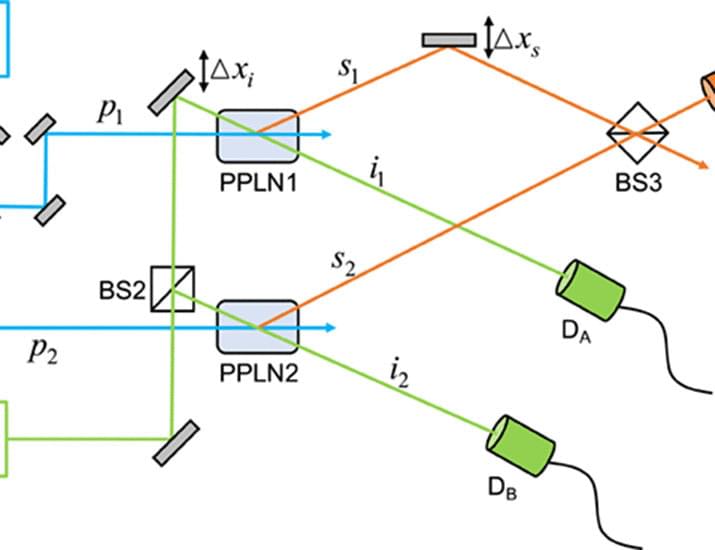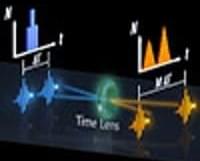Page 5006
Sep 13, 2021
Britain’s young teens will be vaccinated
Posted by Poopeh Morakkabati in categories: biotech/medical, education, neuroscience
Britain’s young teens will be vaccinated — but with a single dose.
London: Britain’s chief medical officers have said that vaccinating young teenagers against COVID-19 is justified when their mental health and education are taken into account.
Minors aged between 12 and 15 in England will be offered just a single dose of Pfizer or Moderna beginning next week, with more research ordered into whether a second dose should be given, as is currently administered to those aged 16 and above.
Continue reading “Britain’s young teens will be vaccinated” »
Sep 13, 2021
The Third Revolution in Warfare
Posted by Dan Kummer in categories: military, robotics/AI
Sep 13, 2021
Israeli firm unveils armed robot to patrol volatile borders
Posted by Dan Kummer in categories: drones, robotics/AI
LOD, Israel — An Israeli defense contractor on Monday unveiled a remote-controlled armed robot it says can patrol battle zones, track infiltrators and open fire. The unmanned vehicle is the latest addition to the world of drone technology, which is rapidly reshaping the modern battlefield.
Proponents say such semi-autonomous machines allow armies to protect their soldiers, while critics fear this marks another dangerous step toward robots making life-or-death decisions.
The four-wheel-drive robot presented Monday was developed by the state-owned Israel Aerospace Industries’ “REX MKII.”
Sep 13, 2021
Do we need humans for that job? Automation booms after COVID
Posted by Dan Kummer in categories: biotech/medical, employment, health, robotics/AI
Automation will drag on at the normal pace. 2025 i think will be the key year, where Human Level hands could turn up on the humanoid robots, and an early phase of Human Level AI turns up; if those 2 things happen automation of jobs will really start to move fast.
Ask for a roast beef sandwich at an Arby’s drive-thru east of Los Angeles and you may be talking to Tori — an artificially intelligent voice assistant that will take your order and send it to the line cooks.
“It doesn’t call sick,” says Amir Siddiqi, whose family installed the AI voice at its Arby’s franchise this year in Ontario, California. “It doesn’t get corona. And the reliability of it is great.”
Continue reading “Do we need humans for that job? Automation booms after COVID” »
Sep 13, 2021
Scientists are potty-training cows in a bid to help save the planet
Posted by Omuterema Akhahenda in category: biological
The results showed that calves performed at a similar level to children when learning to potty-train, and did better than very young children.
If you can potty-train a child, you can potty-train a cow. At least, that was the theory a group of researchers in Germany decided to test, in a bid to find a solution to the environmental damage caused by livestock waste.
“It’s usually assumed that cattle are not capable of controlling defecation or urination,” said Jan Langbein, co-author of a study published Monday in the journal Current Biology.
Continue reading “Scientists are potty-training cows in a bid to help save the planet” »
Sep 13, 2021
Broadband acoustic invisibility and illusions
Posted by Saúl Morales Rodriguéz in category: futurism
The active manipulation of sound waves replaces physical with virtual media to create acoustic invisibility and illusions.
Sep 13, 2021
Low-temperature emergent neuromorphic networks with correlated oxide devices
Posted by Saúl Morales Rodriguéz in categories: quantum physics, robotics/AI
Designing neuromorphic hardware for cryoelectronics is an important area of research as the field of computing paradigms beyond complementary metal-oxide-semiconductor (CMOS) progresses. Superconductivity and metal−insulator transitions are two of the most celebrated emergent, collective properties found in quantum materials such as strongly correlated oxides. Here, we present simulations of artificial neural networks that can be designed by combining superconducting devices (e.g. Josephson junctions) with Mott metal−insulator transition−based tunable resistor devices. Our simulations show that 1) neurons and synapses can be seamlessly created, 2) their functions can be tuned via learning, and 3) controlling disorder by incorporating light ions enables exponential multiplicity of states. The results open up directions for incorporating emergent behavior seen in condensed matter into hardware design for artificial intelligence.
Neuromorphic computing—which aims to mimic the collective and emergent behavior of the brain’s neurons, synapses, axons, and dendrites—offers an intriguing, potentially disruptive solution to society’s ever-growing computational needs. Although much progress has been made in designing circuit elements that mimic the behavior of neurons and synapses, challenges remain in designing networks of elements that feature a collective response behavior. We present simulations of networks of circuits and devices based on superconducting and Mott-insulating oxides that display a multiplicity of emergent states that depend on the spatial configuration of the network. Our proposed network designs are based on experimentally known ways of tuning the properties of these oxides using light ions. We show how neuronal and synaptic behavior can be achieved with arrays of superconducting Josephson junction loops, all within the same device.
Sep 13, 2021
Quantitative complementarity of wave-particle duality
Posted by Saúl Morales Rodriguéz in category: particle physics
Complementarity relation of wave-particle duality is analyzed quantitatively with entangled photons as path detectors.
Sep 13, 2021
Time-magnified photon counting with 550-fs resolution
Posted by Saúl Morales Rodriguéz in categories: computing, nanotechnology, quantum physics
Time-resolved photon counting plays an indispensable role in precision metrology in both classical and quantum regimes. Therein, time-correlated single-photon counting (TCSPC) [1] has been the key enabling technology for applications such as fluorescence lifetime microscopy [2], time-gated Raman spectroscopy [3], photon counting time-of-flight (ToF) 3D imaging [4], light-in-flight imaging [5], and computational diffuse optical tomography [6]. For all these applications, one of the most important figures of merit is the single-photon timing resolution (SPTR, also referred to as photon counting timing jitter). The TCSPC SPTR is limited by the available single-photon detectors. For example, photomultiplier tubes typically provide an SPTR larger than 100 ps [7]. Meanwhile, superconducting nanowire single-photon detectors have superior SPTR in the sub-10-ps range [8, 9]. However, cryogenic cooling significantly increases the system complexity. Single-photon avalanche diodes (SPADs) operate at moderate temperature, which makes them a popular choice for various applications mentioned above. Nevertheless, their SPTR is still limited to tens-of-picoseconds level [10]. On the other hand, orders-of-magnitude enhancement on SPTR is required for many challenging applications such as the study of ultrafast fluorescent decay dynamics [11,12].
In this Letter, we demonstrate a time-magnified TCSPC (TM-TCSPC) that achieves an ultrashort SPTR of 550 fs using an off-the-shelf single-photon detector. The key component is a quantum temporal magnifier using a low-noise high-efficiency fiber parametric time lens [13,14] based on four-wave mixing Bragg scattering (FWM-BS) [15 – 17]. A temporal magnification of 130 with a 97% photon conversion efficiency has been achieved while maintaining the quantum coherence of the signal under test (SUT). Detection sensitivity of -{95}\;rm{dBm}$ (0.03 photons per pulse), limited by the spontaneous Raman scattering noise, is possible and allows efficient processing and characterization of quantum-level SUT. The TM-TCSPC can resolve ultrashort pulses with a 130-fs pulse width difference at a 22-fs accuracy. When applied to photon counting ToF 3D imaging, the TM-TCSPC greatly suppresses the range walk error (RWE) that limits all photon counting ToF 3D imaging systems by 99.2% (130 times) and thus provides high depth measurement accuracy and precision of 26 µm and 3 µm, respectively. The TM-TCSPC is a promising solution for photon counting at the femtosecond regime that will benefit various research fields such as fluorescence lifetime microscopy, time-gated Raman spectroscopy, light-in-flight imaging, and computational diffuse optical tomography.



